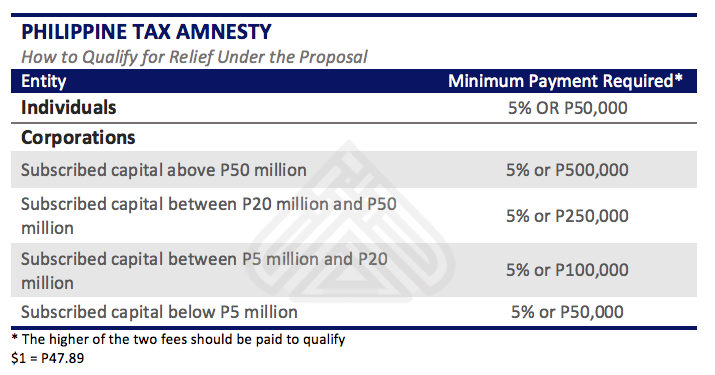By Bradley Dunseith
The Philippines is an archipelago comprising of 7,641 islands. The country shares maritime borders with China, Indonesia, Japan, Malaysia, Taiwan, Vietnam, and the island nation of Palau. In 2015, the Philippines exported goods valued at US$77.9 billion and imported products worth US$76.8 billion. The Philippines’ top export destinations are China, Japan, the United States, and Singapore; and the country’s top import partners are China, Japan, Korea, the United States, and Thailand. In this article we explain best practices for importing into and exporting out of the Philippines.
![]() RELATED: Corporate Establishment Services from Dezan Shira & Associates
RELATED: Corporate Establishment Services from Dezan Shira & Associates
Registration
For importers
To register as an importer, businesses first need an Import Clearance Certificate from the Bureau of Internal Revenue. Importers then register with the Bureau of Customs (BOC) and set up an account with the Client Profile Registration System (CPRS). The Import Clearance Certificate is valid for three years while the Customs Client Profile Accreditation must be updated annually. The CPRS accreditation costs P1000 (US$20) and typically takes 15 working days to process.
For exporters
First time exporters need to register with the CPRS through the Philippine Exporters Confederation. As with importers, the CPRS accreditation must be renewed annually, costs P1000 and takes approximately 15 business days. For certain types of exporters, the Philippines requires additional registration. For instance, coffee exporters must register with the Export Marketing Bureau. Exporters operating out of a special economic zone (SEZ) must register with the Philippine Economic Zone Authority (PEZA) while companies exporting out of free port zones must register with the specific free port. Once registered, exporters will receive a Unique Registration Number, necessary for all export activity.
Required documents
For importers
Businesses importing into the Philippines must provide the following documents when their goods arrive:
- Packing list;
- Invoice;
- Bill of lading;
- Import Permit;
- Customs Import Declaration; and
- Certificate of Origin.
Additional documents for certain imports
Importers bringing in animals, plants, foodstuff, medicine or chemicals must additionally obtain a Certificate of Product Registration from the Philippines’ Food and Drug Administration.
For exporters
Businesses exporting out of the Philippines must provide the following documents before their goods depart:
- Packing List;
- Invoice;
- Bill of Lading;
- Export License;
- Customs Export Declaration; and
- Certificate of Origin.
Additional documents for certain exports
Certain products require government permission to be exported. Below is a detailed list of products requiring additional permission as well as the concerned government authority:
- Endangered species of flora and fauna (Bureau of Biodiversity Management);
- Animals and animal products (Bureau of Animal Industry);
- Fish and fish products (Bureau of Fisheries and Aquatic Resources);
- Plants (Bureau of Plant Industry);
- Rice (National Food Authority);
- Radioactive materials (Philippine Nuclear Research Institute) and;
- Sugar and molasses (Sugar Regulatory Administration).
Tariffs and Taxes
For importers
The Philippines follows the United Nation’s Standard International Trade Classification (SITC). Import tariffs can range from 0 to 65 percent. Imported goods in sectors which have high domestic production typically incur higher tariffs. For non-agricultural goods, tariffs average at 6.7 percent.
The Philippines Tariff Commission has launched a ‘tariff finder’ web portal to help importers, which can be accessed here.
The Philippines Customs apply a value added tax (VAT) for imported goods at 12 percent. The Philippines’ customs levy no tariff or tax for goods worth less than P10,000 (US$200).
For exporters
The only exported good which incur a tariff are logs at 20 percent.
Special Economic Zones
Businesses operating in Special Economic Zones (SEZs) or free port zones are exempted from paying taxes and tariffs on imported raw material and manufacturing equipment. As stipulated in the Customs Modernization and Tariff Act, 2015, the main SEZs in the Philippines include:
- Clark Freeport Zone;
- Poro Point Freeport Zone;
- John Hay Special Economic Zone;
- Subic Bay Freeport Zone;
- Cagayan Special Economic Zone;
- Zamboanga City Special Economic Zone and;
- Freeport Area of Bataan.
As mentioned earlier, exporters and importers operating in SEZs or free port zones must register with either PEZA or the specific free port regulator.
Free trade agreements
The Philippines is a member of six regional free trade agreements (FTAs) as well as one bilateral FTA with Japan. As a member of the Association of Southeast Asian Nations (ASEAN), the Philippines is naturally a participant in the ASEAN Trade in Goods Agreement (ATIGA). The country enjoys significantly reduced tariff rates within ASEAN though some tariff lines on sensitive food products still remain. The Philippines, by virtue of its membership in ASEAN, is also a party to the five FTAs that ASEAN has signed with the following countries or group of countries:
- Australia and New Zealand;
- China;
- India;
- Japan; and
- Korea
The Philippines government offers a breakdown of each FTA and the applicable preferential tariff rates here.
 RELATED: The Philippine Economic Zone Authority – Incentives and Assistance
RELATED: The Philippine Economic Zone Authority – Incentives and Assistance
Conclusion
The Philippines is a dynamic and strategic trading location. As the country continues to comply with ASEAN-wide economic integration, opportunities for both importers and exporters will continue to grow. Utilizing experts with up-to-date local knowledge can help exporters and importers to not only avoid customs-related delays and frustrations but also ensure import and export activity occurs quickly and remains profitable. Local experts at Dezan Shira & Associates possess years of experience supporting the establishment and growth of businesses across ASEAN, and are well situated to guide companies through the Philippines’ constantly evolving regulatory landscape.






 By
By